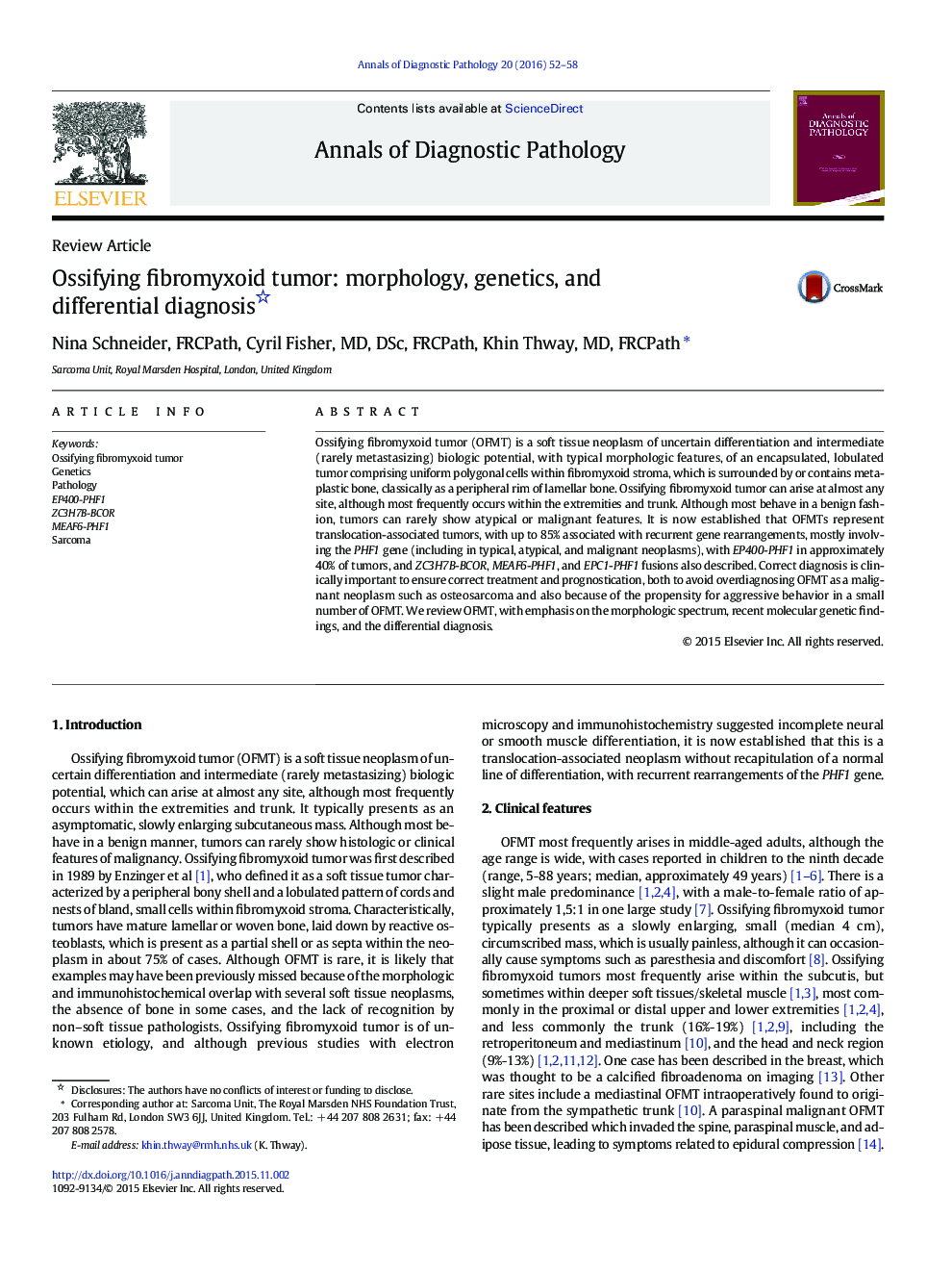| Article ID | Journal | Published Year | Pages | File Type |
|---|---|---|---|---|
| 4129743 | Annals of Diagnostic Pathology | 2016 | 7 Pages |
Ossifying fibromyxoid tumor (OFMT) is a soft tissue neoplasm of uncertain differentiation and intermediate (rarely metastasizing) biologic potential, with typical morphologic features, of an encapsulated, lobulated tumor comprising uniform polygonal cells within fibromyxoid stroma, which is surrounded by or contains metaplastic bone, classically as a peripheral rim of lamellar bone. Ossifying fibromyxoid tumor can arise at almost any site, although most frequently occurs within the extremities and trunk. Although most behave in a benign fashion, tumors can rarely show atypical or malignant features. It is now established that OFMTs represent translocation-associated tumors, with up to 85% associated with recurrent gene rearrangements, mostly involving the PHF1 gene (including in typical, atypical, and malignant neoplasms), with EP400-PHF1 in approximately 40% of tumors, and ZC3H7B-BCOR, MEAF6-PHF1, and EPC1-PHF1 fusions also described. Correct diagnosis is clinically important to ensure correct treatment and prognostication, both to avoid overdiagnosing OFMT as a malignant neoplasm such as osteosarcoma and also because of the propensity for aggressive behavior in a small number of OFMT. We review OFMT, with emphasis on the morphologic spectrum, recent molecular genetic findings, and the differential diagnosis.
